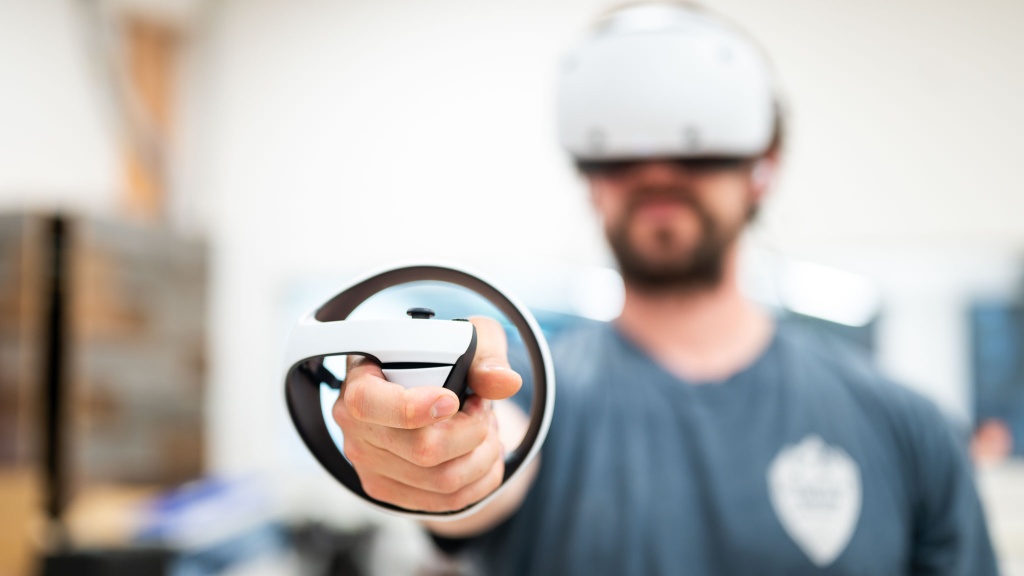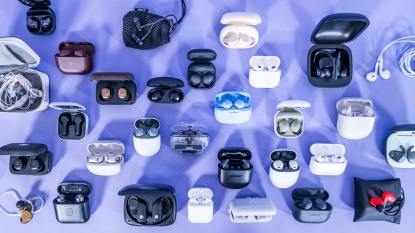Curious about VR? We take a look at the different types of VR systems available on the market today, why you might even think about getting one and what they are used for, as well as what you actually need to make one of these systems run properly. VR is a rapidly advancing technology and can be a bit daunting to the new user, but we break down exactly what to look for and what you can expect when purchasing a new system in this article. You may also want to check out our comprehensive best VR headset review for more information on how specific models fared when we tested them head-to-head.
Why Should You Even Get a VR Headset?
It's hard to convey how amazingly cool a VR experience is until you experience one yourself. For example, VR gives you a chance to be completely immersed in a video or game, making for a much more engaging and interactive experience than simply watching it on a flat screen. You can look around at what you want to and, if the experience is properly done, actually feel like you are climbing Mt. Everest or cage diving with white sharks.
More and more content is being produced every day that is filmed specifically with virtual reality in mind. As more and more filmmakers and documentarians embrace VR, the library of available experience is growing exponentially. There are also plenty of games available, either VR versions of popular existing games or ones specifically made for VR.
All in all, VR is rapidly becoming a large portion of the way that we view media. Many companies are placing bets that VR will be the predominant media viewing method in the future and it's worth checking it out. Unfortunately, it's pretty hard to look good when wearing a VR headset, so expect some slight teasing when you are using it. Now we will look at some of the various VR systems out there and the questions you should ask yourself before making your final purchase.
Step 1: Standalone or Tethered?
First and foremost, when picking the best VR headset you must decide whether you are looking for a standalone or tethered headset. VR predominantly falls into these two categories at the moment. We'll break down the pros and cons of each type and why you should select one over the other in the following sections.
Standalone
A standalone VR system refers to a standalone headset that does not require a PC or external console to operate. The current examples of these types of kits are the Meta Quest and the Apple Vision Pro.
We have a lot of experience with the Meta Quest and can't recommend it highly enough for anyone looking to get their feet wet in VR without breaking the bank. It offers an excellent standalone experience, and it can be tethered to a VR-ready PC when you are ready to take it to the next level.
Tethered
Tethered headsets are the current cream of the crop when it comes to VR systems. Named due to the bundle of cables that connects the headset to the gaming computer or console, these products are the best you can get at the moment. These products have dedicated hand controllers that track your motion, adding a ton of interactivity to your VR experience. These experiences are usually much longer and more fully-fleshed out than those found on mobile headsets due to the additional processing power and memory available to the developer. Tethered headsets are significantly more visually immersive than their mobile counterparts. Consequently, these products are much more expensive, especially when you take into consideration the cost of the required hardware — the gaming computer or console. Tethered headsets are also much more work to install, requiring you to place sensors around the room or mount them on the walls.
These products are for hard-core gamers or VR enthusiasts — those who are confident that they want the best and are willing to invest the time and energy in making it happen. You also need plenty of floor space for these systems, so be prepared to devote a small room or be willing to clear furniture out of the way whenever you are using it.
Step 2: What Hardware Do You Already Own?
The next question that you should ask yourself when thinking about purchasing a new VR headset is easy: What hardware do you already have that is VR compatible? Most people are going to be somewhat limited in picking a VR headset by their existing hardware, as fewer people are going to invest in purchasing an entire setup from scratch simply to experience VR.
Those who already have a higher-end gaming computer should look at two of our high-scoring, tethered headsets, the Valve Index and the HP Reverb G2. These are both excellent models, with the Reverb G2 being the best visuals you can get and the Index being a great and high-performing budget option. Both of these headsets have similar minimum requirements that most higher-end gaming computers should easily satisfy.
For those who already have a PS5, the PlayStation VR is an obvious choice. This is a great VR system on its own merits, made even better if you already have the majority of the required hardware.
Moving on to the standalone headsets, we have the Meta Quest. This is hands down the easiest and cheapest way to get into quality VR experiences.
Conclusion
Hopefully, this article has taken some of the mystery out of the various VR systems and helped you narrow down your choices. You can check out which headsets we recommend in our complete review of these products or consult our detailed How We Test article for a comprehensive look at our testing plans and procedures.

















